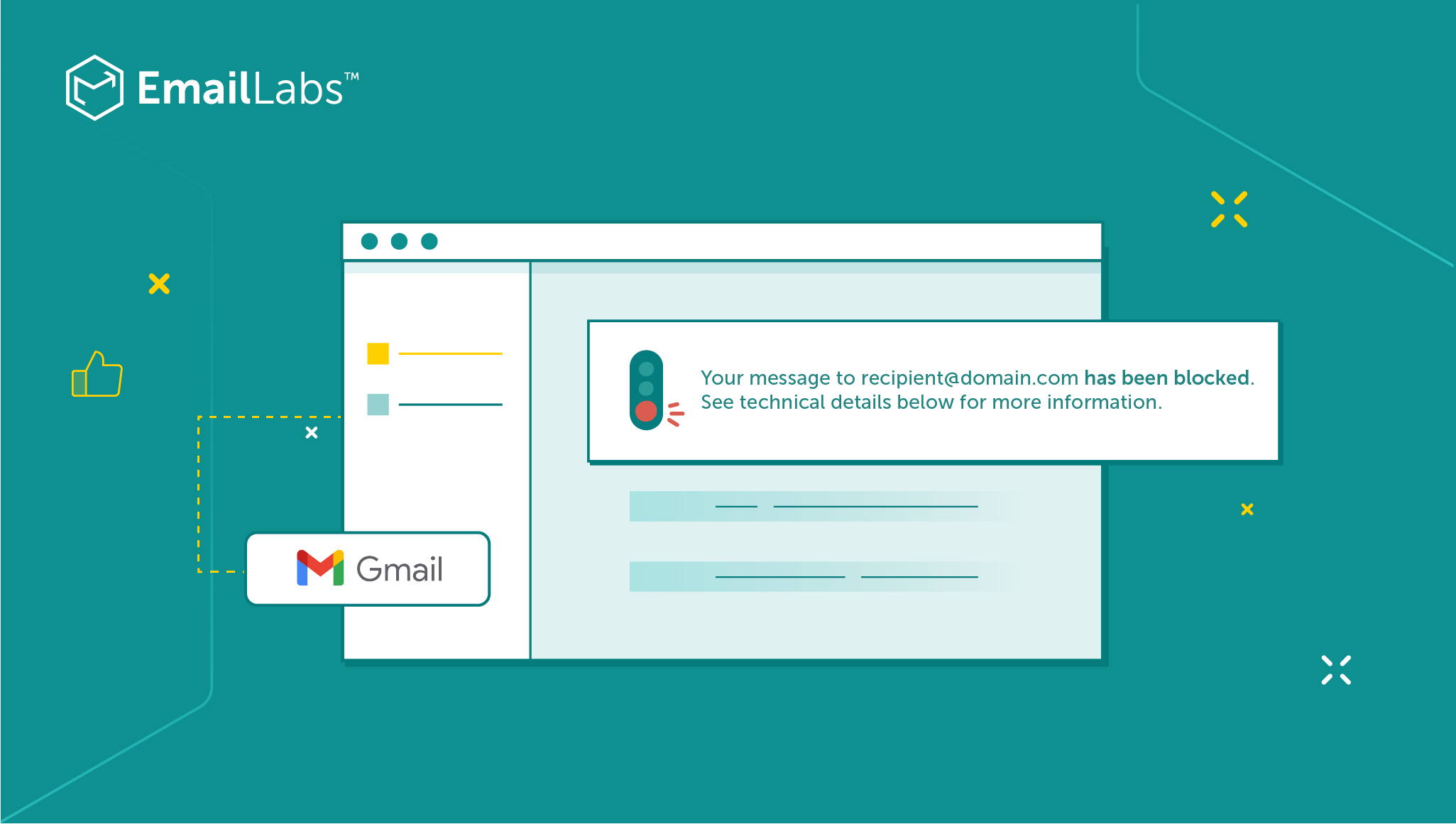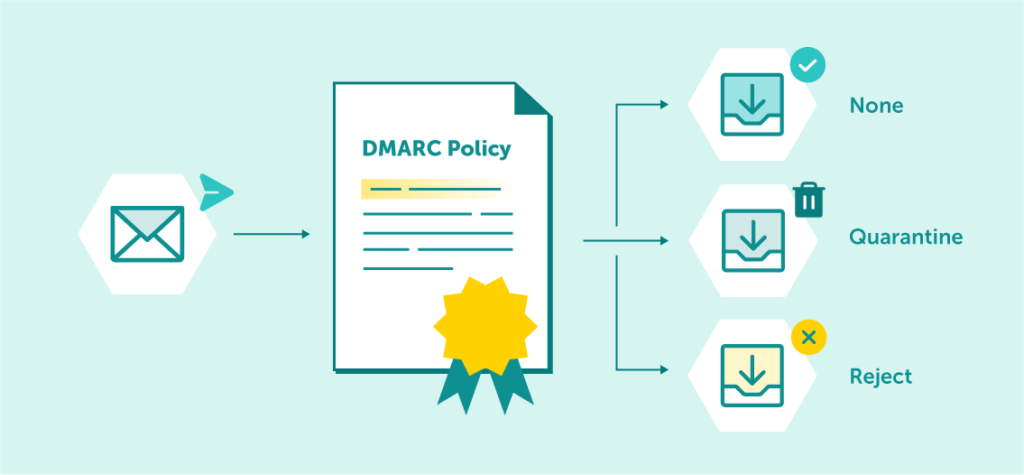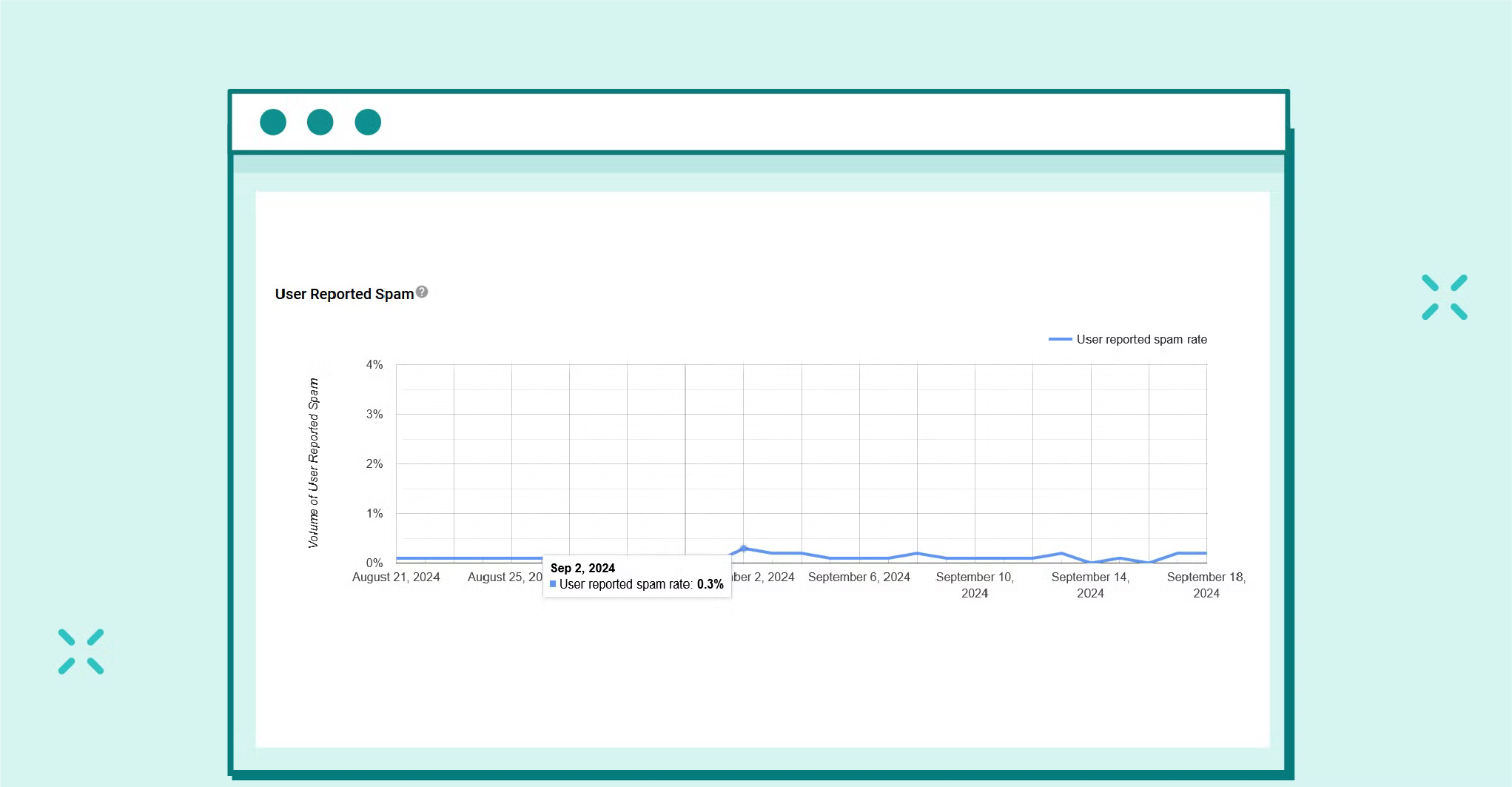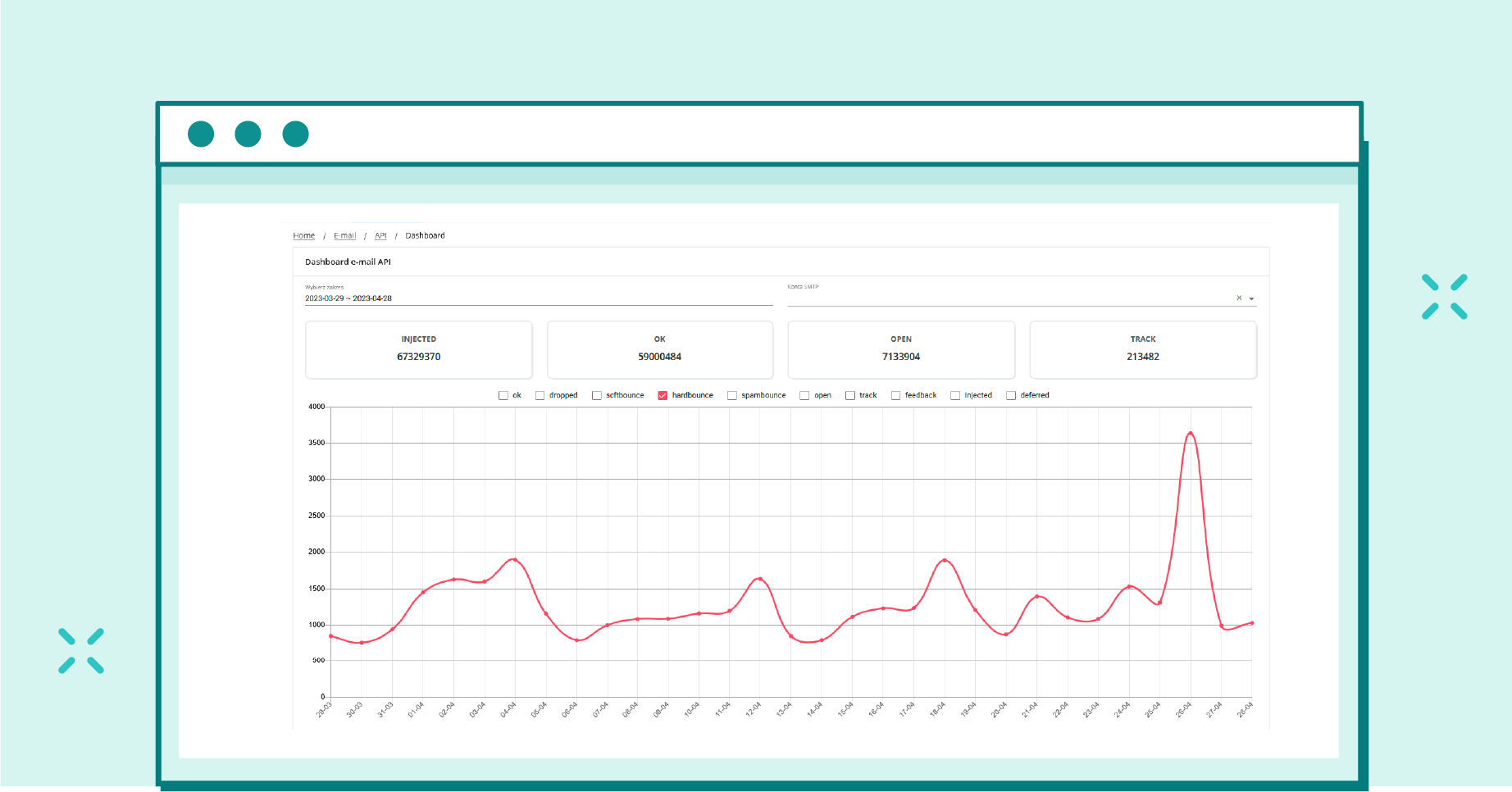
Are you frustrated with the constant struggle of your emails getting blocked by Gmail? Have you ever wondered about the reasons behind this issue and, more importantly, how to end it?
In this comprehensive article, we will delve deep into the realm of Gmail blocking, unraveling the mysteries behind why it occurs and equipping you with practical steps to maximize the chances of successful delivery of your emails. Say goodbye to the hassle of blocked emails and hello to a smoother, more effective email communication strategy.
Gmail’s spam filter prevents certain emails from reaching the recipient’s inbox. When Gmail detects an email as spam or malicious, it automatically marks it as such and either sends it to the spam folder or blocks it entirely. Gmail’s spam filter and inbox are designed to analyze incoming emails and identify potential spam or malicious content.
It uses various algorithms and techniques to detect patterns, keywords, and other indicators that suggest an email is unwanted or potentially harmful.
It’s worth noting that while Gmail’s spam filter is highly effective, it is not perfect, and occasionally legitimate emails may be flagged as spam. It’s always a good practice to periodically check the Spam folder for any legitimate emails that might have been incorrectly filtered. You can also learn how to keep your email from ending up in a spam folder with these tips.
Gmail, like many other email service providers, uses various mechanisms to protect its users from spam, phishing attempts, and fraudulent emails. To ensure email deliverability and avoid Gmail’s blocking mechanisms, it’s essential to understand the role of DMARC (Domain-based Message Authentication, Reporting, and Conformance).
DMARC (Domain-based Message Authentication, Reporting & Conformance) is an email authentication protocol designed to give domain owners control over their email security. It helps prevent email spoofing, which occurs when attackers use forged email addresses to deceive recipients into believing a message is legitimate.
DMARC builds on two other security protocols, SPF (Sender Policy Framework) and DKIM (DomainKeys Identified Mail), to provide a comprehensive layer of protection for domain-based email.
Here’s how Gmail interacts with DMARC:

Depending on the DMARC policy, the email message may be delivered, placed in the spam folder, or rejected outright.
4. Reporting: Gmail generates DMARC reports and sends them to domain owners who have published DMARC records.
DMARC’s reporting feature is one of its most powerful tools, providing domain owners with insights into how their emails are being handled by receiving email servers like Gmail. These reports help organizations monitor email activity, detect fraudulent use of their domain, and adjust their authentication settings accordingly.
Gmail’s spam filter is designed to identify and block emails with low-quality content. This includes emails that contain excessive use of keywords, poor grammar, or unrelated topics. To ensure your emails don’t get blocked for this reason, make sure they are well-written, relevant, and provide value to the recipient.
10 Best Email Subject Lines
Avoid using all caps or excessive punctuation in your subject line or email body, as this can be seen as spammy. It’s also important to avoid using deceptive or misleading information in your emails, such as false subject lines or suspicious links and attachments. Gmail’s spam filter is constantly evolving and improving, so it’s crucial to stay up to date with best practices to ensure your emails reach the intended recipients’ inboxes, not their spam folders.
If you suddenly send out a large number of emails to a ton of Gmail contacts within a short period, Gmail may perceive it as suspicious activity and block or rate-limit email delivery. This can happen when you launch a new email campaign or send emails on behalf of other individuals or businesses. To prevent Gmail blocking issues, gradually increase your email volume and monitor your sending practices.
| Day 1 | Day 2 | Day 3 | Day 4 | Day 5 | Day 6 | Day 7 | |
|---|---|---|---|---|---|---|---|
| Week 1 | 100 | 300 | 500 | 1 000 | 3 000 | 10 000 | 20 000 |
| Week 2 | 40 000 | 60 000 | 80 000 | 100 000 | 150 000 | 200 000 | 300 000 |
| Week 3 | 400 000 | 500 000 | 600 000 | 800 000 | 1 000 000 | 1 100 000 | 1 200 000 |
| Week 4 | 1 500 000 | 3 000 000 | 4 000 000 | 5 000 000 | 6 000 000 | 7 000 000 | 8 000 000 |
Gmail, like other email providers, assigns a sender score to each email sender based on their sending reputation. If your sender score drops due to factors such as high bounce rates, excessive spam complaints, or sending to invalid email addresses, Gmail may start blocking and flagging your emails. To maintain a good sender score, regularly clean your email list, remove invalid addresses, and address any complaints promptly.

You can easily check your sender score using the free tool Mailchecker.
If your IP address has been suspended or blacklisted by Gmail or other email service providers, rest assured that your emails will be blocked. This can happen if your IP address has been associated with spamming or other malicious activities. To resolve this, work with your email service provider to identify the issue and take the necessary steps to get your IP address unblocked.

In the EmailLabs panel, there is an IP Reputation section. This indicator shows the reputation of the server from which messages are sent.
Gmail uses a system to block emails sent to invalid addresses, helping to protect against potential spam. This typically happens when your mailing list contains outdated or incorrect email addresses. So, it’s essential to verify and update your email addresses regularly.
Doing this not only improves your email communication but also shows your dedication to maintaining a reliable contact list. This can greatly enhance your email marketing efforts.
Gmail closely monitors the spam complaint rate associated with your emails. If recipients frequently mark your emails as spam, Gmail will begin to block or filter them out. To prevent this, ensure that your email recipients have willingly subscribed to your mailing list and provide a clear way to unsubscribe (user-friendly One-Click Unsubscribe is the best option) if they no longer wish to receive your emails.

You can track your spam complaint rate using the Google Postmaster Tool to stay informed and take corrective action.
Gmail’s spam filter detects and blocks emails that contain unwanted content, such as explicit or offensive language, phishing attempts due to misleading links, impersonation or malware. Make sure to carefully review the content of your emails and avoid using any language or content that could be flagged as unwanted.
Proper email authentication is crucial for ensuring the deliverability of your emails. Gmail may block emails that fail authentication checks, such as SPF (Sender Policy Framework) or DKIM (DomainKeys Identified Mail). To avoid this, make sure to properly configure these authentication protocols and regularly check for any authentication issues.
Sender Authorization – EmailLabs Free Configurator
If many of your emails can’t reach the right inbox, Gmail might get suspicious and start blocking them. The reasons can vary – maybe the email addresses are wrong, mailboxes are full, or there are technical problems. To keep Gmail happy and your emails flowing, stay on top of your email list. Clean it up regularly to avoid these issues, and make sure your messages find their way to the people who need to see them.

In the EmailLabs panel, you can monitor and analyze every email sent from your domain.
Gmail has established best practices that email senders should follow to ensure their emails are delivered successfully. Ignoring these practices, such as sending too many emails within a short time frame, using misleading subject lines, or deceiving recipients in any way, can lead to email blocking. Familiarize yourself with Gmail’s guidelines and adhere to them to maintain a positive sender reputation and improve deliverability.
Google and Yahoo’s Email Sender Requirements in 2024 [Updated Enforcement Timeline]
To avoid your emails being blocked by Gmail, follow these practices:
If you suspect that Gmail is blocking your emails, here’s how you can check:
If you want to improve your email deliverability to Gmail, consider the following tips:
If you want to experience unparalleled newsletter deliverability, see how EmailLabs can boost your email delivery efficiency. Unlock rapid sending capabilities, empowering you to cultivate a strong reputation among your subscribers.
Gmail flagging or blocking your emails can be both frustrating and detrimental to your email marketing efforts. However, by understanding the reasons behind Gmail filtering mechanisms your email deliverability
Follow best practices such as proper email authentication (SPF, DKIM, DMARC), maintaining clean email lists, and avoiding spammy content to reduce the risk of your emails being flagged. Regularly monitoring key metrics like open rates, bounce rates, and Google Postmaster Tools will also help you spot deliverability issues early on.
Building a positive sender reputation is crucial. This can be achieved by sending relevant, high-quality content that your recipients value and engage with, as well as managing the frequency of your emails to avoid overwhelming your audience.
By combining technical best practices with a focus on content quality and consistent monitoring, you can prevent Gmail from flagging your emails and ensure that your messages reach the inbox, maximizing the success of your email campaigns.
Maximize your email deliverability and security with EmailLabs!
There could be several reasons why your emails are being blocked on Gmail. It could be due to spam filter issues, poor IP reputation, or domain authentication problems. Additionally, using spammy language, sending emails too frequently, or sending to invalid email addresses can trigger blocks. It’s important to ensure that your emails are following best practices to avoid your emails being marked as spam, and to regularly monitor your email deliverability.
To prevent Gmail from blocking your emails, you can take a few steps. First, make sure you have good list hygiene by regularly cleaning your email list and removing inactive or non-engaging subscribers. Second, authenticate your domain with SPF, DKIM, and DMARC, to improve email deliverability. Lastly, monitor your email deliverability and use Google Postmaster Tools and third-party monitoring tools to track your sender reputation and identify any issues.
If your emails are being marked as spam on Gmail, it’s important to review your email message and ensure that it complies with Gmail’s guidelines. Avoid using spammy language, excessive links, or misleading subject lines. Additionally, check your email authentication settings and perform a deliverability test.
Yes, Gmail can block your marketing emails if they are flagged as spam by their spam filters. To avoid this, make sure to follow best practices for email marketing campaigns, maintain a good sending reputation, and monitor your email deliverability. It’s also helpful to engage with your subscribers and encourage them to add your email address to their contacts.
If Gmail is blocking your emails, you should first check if your IP address or domain has been blacklisted. If so, take the necessary steps to remove it from the blacklist. Ensure SPF, DKIM, and DMARC records are correctly set up. Additionally, review your email content and make sure it complies with Gmail’s guidelines.
There are several factors that can lead to your emails getting blocked on Gmail. This could include sending out emails from a new IP address, having a high number of spam complaints, or not meeting Gmail’s email domain and IP expectations. It’s important to maintain a good sending reputation and comply with email best practices to avoid getting blocked.
Gmail expects emails from a new IP address to go through a warm-up process. During this period, Gmail may treat your emails with caution and apply stricter filtering. It’s important to start sending small batches of emails and gradually increase the volume to build a positive sending reputation with Gmail.
Yes, Gmail can block your emails without any notice if they are flagged as spam or phishing or if your domain has violated Gmail’s guidelines. That’s why it’s important to proactively follow best practices, such as maintaining proper email authentication, adhering to sending limits, and monitoring recipient engagement. Regularly reviewing Google Postmaster Tools and other deliverability metrics will help you spot issues early, even without formal notice.
We live in a world where your customers switch seamlessly between laptops, smartphones, and tablets. They navigate a complex digital ecosystem – checking emails, using mobile apps, and reacting...
We are delighted to announce that Vercom S.A., the company behind the EmailLabs project, has successfully completed the ISO 22301 certification process. This significant achievement underscores our commitment to...
EmailLabs, as part of the Vercom group, proudly announces its full commitment to aligning its ICT services with the latest cybersecurity standards. In response to dynamically changing regulations, the...
We are pleased to announce that MessageFlow, a product from the Vercom S.A. group, has received the prestigious CSA (Certified Senders Alliance) Certification. This recognition not only underscores the...
IT & Tech, Pytania i odpowiedzi, Technical
When an email travels from sender to recipient, it passes through several critical components of email infrastructure. At the heart of this journey sits the Mail Transfer Agent (MTA)...
Best practices, Deliverability, Google and Yahoo's Requirements, Pytania i odpowiedzi
The world of email marketing is constantly evolving, and leading mail service providers – Gmail, Yahoo, Microsoft, and Apple – regularly update their guidelines for senders. In recent years,...
Gmail, Google and Yahoo's Requirements
You might have noticed a new item in your Gmail sidebar recently – the “Manage subscriptions” tab, often flagged with a blue notification dot. While Google announced this feature...
IT & Tech, Pytania i odpowiedzi, Technical
When an email travels from sender to recipient, it passes through several critical components of email infrastructure. At the heart of this journey sits the Mail Transfer Agent (MTA)...
Best practices, Deliverability, Google and Yahoo's Requirements, Pytania i odpowiedzi
The world of email marketing is constantly evolving, and leading mail service providers – Gmail, Yahoo, Microsoft, and Apple – regularly update their guidelines for senders. In recent years,...
Gmail, Google and Yahoo's Requirements
You might have noticed a new item in your Gmail sidebar recently – the “Manage subscriptions” tab, often flagged with a blue notification dot. While Google announced this feature...
IT & Tech, Pytania i odpowiedzi, Technical
Efficient email communication isn’t just about sending messages — it also involves integrating email functionality into your business systems and applications. Email APIs (Application Programming Interfaces) serve as the...
One of the most important yet often underestimated elements in shaping a company’s brand perception is the transactional email. In e-commerce, the design of such messages must be carefully...
Google and Yahoo's Requirements, Yahoogle
2024 brought fundamental changes to email marketing, introducing new, stringent requirements for senders. Since February 1, 2024, Google and Yahoo have started enforcing new deliverability rules, primarily targeting bulk...
We live in a world where your customers switch seamlessly between laptops, smartphones, and tablets. They navigate a complex digital ecosystem – checking emails, using mobile apps, and reacting...
Are your campaigns not engaging all recipients as you expect? Do they fail to open your emails or click on links, lowering your campaign effectiveness and email marketing ROI?...
Gmail, Google and Yahoo's Requirements, Updates
Gmail’s educational phase has ended. Google has officially announced the start of a new phase – the Gmail Enforcement Phase – which begins to take effect in November 2025....